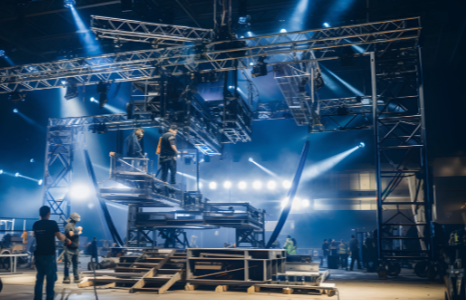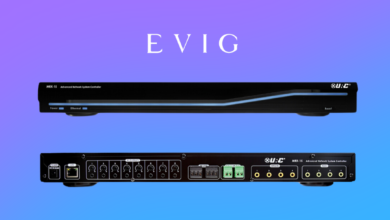The Power of Automated Rigging in Modern Entertainment

The Power of Automated Rigging in Modern Entertainment
In the ever-evolving world of live entertainment, stage productions, and immersive environments, the demand for precision, safety, and creative flexibility has never been greater. As productions grow in complexity, many venues and technical directors around the globe are turning to automated rigging as a smarter, more efficient alternative to traditional systems. This article explores what automated rigging is, why it’s reshaping modern stagecraft, and how it supports a new generation of productions.
What Is Automated Rigging?
Automated rigging refers to the use of digitally controlled hoists, winches, and motion systems to manage the movement of objects in a stage or event environment. Instead of relying on manual operations or counterweight systems, automated rigs allow for precise, repeatable movements that can be fully programmed in advance. This makes it possible to synchronize scenery, lighting trusses, video elements, and even performers, all from a central control interface.
These systems use advanced controllers, load monitoring, and comprehensive safety protocols to ensure reliable operation across a wide range of applications. From theaters and arenas to concert tours and exhibition halls. Many rigs also integrate with other stage technologies, allowing designers to coordinate motion with lighting, audio cues, and special effects, creating seamless, immersive experiences for audiences. Additionally, automated rigs often provide detailed analytics and logging, which can be invaluable for maintenance, troubleshooting, and optimizing future productions.
The Global Benefits of Automated Rigging
One of the most significant advantages of automated rigging is the level of consistency it brings to every production. Because movements are programmed digitally, they happen the same way every time—whether it’s raising a video screen, flying in a scenic element, or rotating a stage platform. This eliminates the guesswork and variability associated with manual rigging.
In addition to precision, automated systems significantly improve workflow efficiency. Scene changes that used to require multiple technicians and several minutes can now be executed in seconds with the press of a button. This not only shortens production time but also reduces rehearsal overhead, giving teams more room to focus on creativity.
Safety is another critical factor. Automated rigging systems come with built-in load sensors, limiters, and emergency stop functions. These features protect both the crew and the equipment by ensuring that no element moves beyond safe operating parameters. In environments where heavy objects are suspended above people, this level of control is essential.
Moreover, automated rigging can reduce labor requirements. Since many complex movements are handled digitally, fewer crew members are needed to operate the system during live events. This allows productions to run leaner without sacrificing quality or safety.
From a creative standpoint, automated rigging unlocks new possibilities. Designers are no longer limited by what can be moved manually or what fits within a static set. With programmable pitch, roll, lift, and travel, scenic elements can move fluidly and interact with lighting or audio cues in real time. This opens the door to more immersive and technically ambitious shows.
Why CyberMotion?
When it comes to implementing a high-performance rigging system, CyberMotion offers a sophisticated, scalable solution. Their technology is designed for global use, with multivoltage compatibility and modular components that adapt to different production sizes and technical requirements.
CyberMotion’s systems are engineered with both creative and technical teams in mind. Their intuitive control software allows for object-oriented programming, meaning you can manage the motion of a complete scenic element rather than programming each hoist individually. This not only simplifies setup but also reduces the potential for errors during operation.
In addition, CyberMotion systems are known for their reliability under pressure. Whether used in a fixed installation or a touring production, the hardware is built to perform consistently in demanding environments. Remote diagnostics and software updates further ensure that teams can maintain peak performance over time.
A Future-Ready Investment
As productions continue to push the boundaries of what’s possible on stage, investing in automated rigging becomes a strategic decision. It enables smoother workflows, enhances safety, and empowers designers with tools that were previously out of reach.
Moreover, automated rigging represents a long-term solution that grows with your production needs. Modular components, scalable systems, and programmable controls mean that as shows become more ambitious or venues change, the rigging setup can be adapted rather than replaced. This flexibility not only protects your investment but also ensures that creative teams can explore new forms of stagecraft without being limited by physical or operational constraints. Over time, the ability to integrate data, analytics, and remote monitoring further enhances both efficiency and reliability, making automated rigging a cornerstone of modern entertainment infrastructure.
Whether you’re planning a high-end theatrical production, a touring concert, or a multimedia installation, automated rigging delivers the precision, flexibility, and scalability needed to bring ambitious ideas to life. With proven systems and global expertise, CyberMotion stands ready to support your next show—wherever it takes place.





